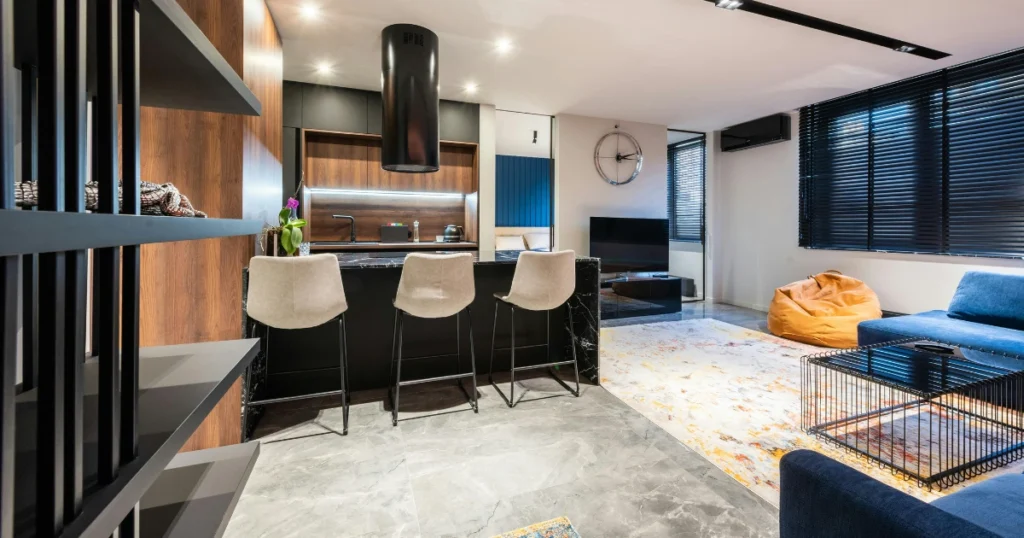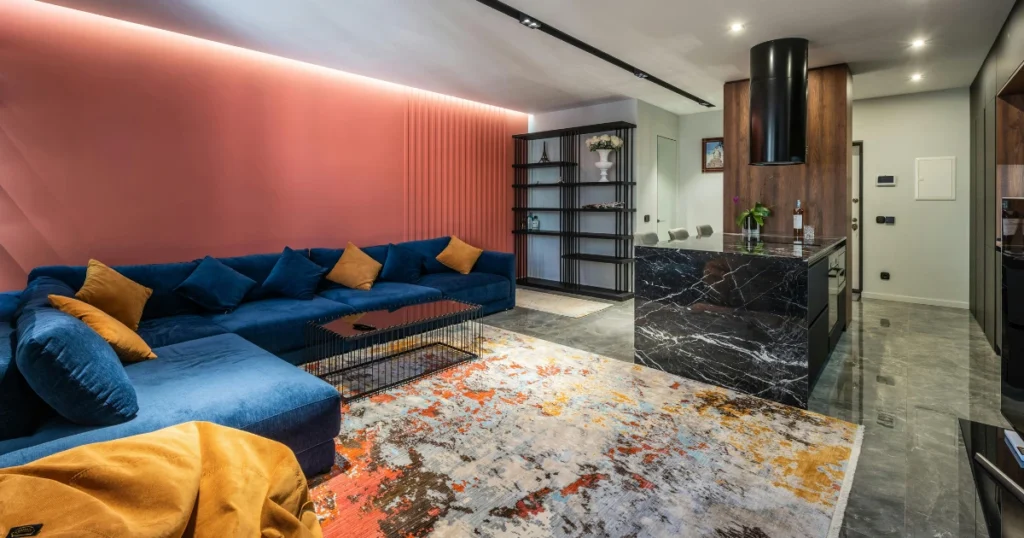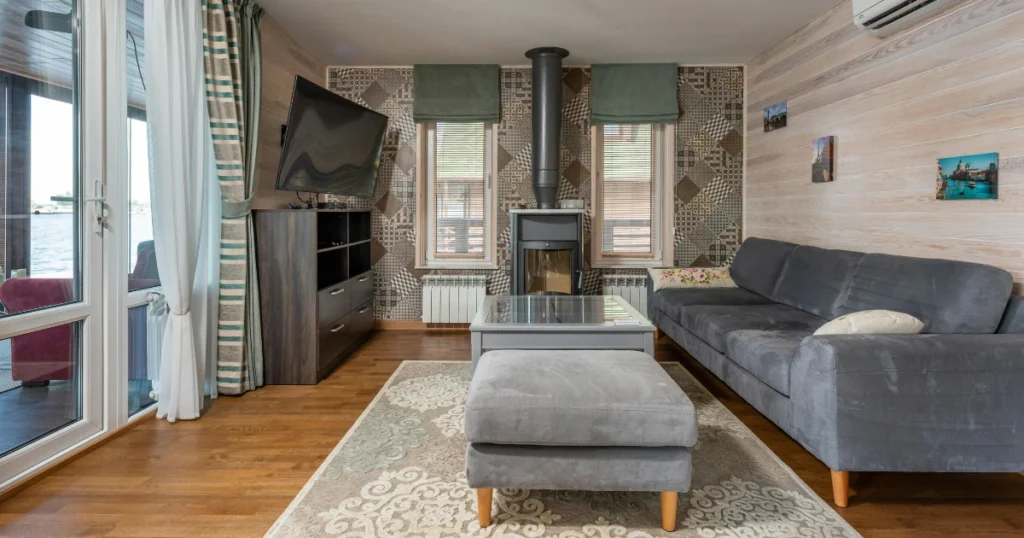Want to add a personal touch to your home? Making a custom rug is a fun and creative way to do just that! Whether you have a specific design in mind or simply want a one-of-a-kind piece, creating your own rug lets you bring your vision to life.
From picking the perfect materials to designing a style that reflects your personality, this guide will show you how to make custom rug that’s truly unique and totally you!
Materials You’ll Need to Make Custom Rug

Before you begin your rug-making journey, you’ll need to gather a few essential materials to make the process as smooth as possible. Here’s a list of everything you’ll need to get started:
| Material | Purpose |
|---|---|
| Rug Canvas or Backing | Provides structure and base for your custom rug. |
| Yarn or Fabric Strips | Main material used for weaving or tufting. |
| Rug Hook or Tufting Gun | Tools to pull the yarn through the canvas. |
| Scissors or Cutter | Used for cutting yarn or fabric into desired lengths. |
| Ruler or Measuring Tape | Ensures precise dimensions and design layout. |
| Rug Binding Tape | To finish the edges of your custom rug. |
| Non-Slip Rug Pad | Provides extra grip and stability under your rug. |
These materials will vary slightly depending on the rug-making technique you choose, but this basic kit will cover most methods.
Step-by-Step Guide: How to Make Custom Rug
Creating a custom rug involves several steps, from designing to finishing. Below, we break down the process into manageable parts, making it easy to follow.
Design Your Custom Rug
Design is the most exciting part of making a custom rug, allowing you to express your creativity. Here’s how to get started with your design:
- Sketch Your Idea: Start by sketching your rug design on paper. Think about the size, shape, and colors you want.
- Choose a Pattern: Decide if you want a simple or intricate pattern. Geometric, floral, or abstract designs are popular choices.
- Consider Colors: Select a color palette that complements your space. You can experiment with bold colors or stick to neutral tones for a more classic look.
Choose the Right Materials

Choosing the right materials is crucial to the success of your custom rug. Here are some options:
- Yarn: Opt for high-quality wool, cotton, or synthetic yarns for durability.
- Fabric: If using fabric strips, recycled materials like old t-shirts can work well.
- Backing: Use a strong rug canvas or hessian for long-lasting results.
| Material Type | Durability | Cost | Best Used For |
|---|---|---|---|
| Wool Yarn | High | Moderate-High | Traditional rugs, texture |
| Cotton Yarn | Medium | Moderate | Light, decorative rugs |
| Synthetic Yarn | High | Low-Moderate | High-traffic areas |
| Recycled Fabric | Medium | Low | Casual or playful designs |
Preparing Your Workspace
Having a clean, organized workspace is essential for an efficient rug-making process. Here are a few tips to prepare your workspace:
- Clear Space: Ensure that you have a large, flat surface to lay out your materials.
- Lighting: Proper lighting will help you see your design and avoid mistakes.
- Storage: Keep your yarn, tools, and other materials organized in containers or baskets.
Techniques to Create Your Custom Rug
There are several popular techniques you can use to make custom rug, each providing a different look and feel:
Tufting Technique
- Tools: Tufting gun, yarn, backing fabric.
- Process: Use a tufting gun to punch yarn through the fabric in your desired pattern.
Hooking Technique

- Tools: Rug hook, yarn, burlap or canvas backing.
- Process: Pull loops of yarn through the backing fabric using a rug hook to create your design.
| Technique | Difficulty Level | Time Required | Best For |
|---|---|---|---|
| Tufting | Medium | Fast | Bold, thick rugs |
| Hooking | Easy | Moderate | Detailed, delicate designs |
| Weaving | Advanced | Slow | Traditional woven rugs |
| Braiding | Easy | Moderate | Rustic or farmhouse styles |
Different Types of Custom Rugs You Can Make
There are various types of custom rugs you can create, depending on your design preferences and crafting skills. Let’s explore some popular types:
Tufted Rugs
Tufted rugs are thick and plush, offering a cozy feel underfoot. They can feature bold, graphic patterns or intricate designs. Tufting is one of the quickest methods to make custom rugs.
Hooked Rugs
Hooked rugs have a textured surface created by pulling loops of yarn through a canvas backing. These rugs often have a more traditional appearance and are perfect for adding a handmade touch to any room. If you’re looking to make custom rug, the hooking technique is an excellent choice for achieving a unique, textured design that adds charm and warmth to your space.
Woven Rugs
Woven rugs are made by interlacing yarn or fabric strips on a loom. While this method is time-consuming, it results in beautiful, durable rugs that can last for years. If you’re planning to make custom rug, the woven technique is a fantastic option for adding texture and intricate patterns to your space, making it both stylish and long-lasting.

| Rug Type | Texture | Best For |
|---|---|---|
| Tufted | Plush | Living rooms, bedrooms |
| Hooked | Textured | Entryways, kitchens |
| Woven | Flat | High-traffic areas |
| Braided | Chunky | Rustic or farmhouse decor |
DIY Custom Rug Tips and Tricks
- Test Your Materials: Before committing to a full design, test your materials on a small section of canvas to ensure they work well together.
- Keep Edges Tight: When tufting or hooking, make sure your edges are tight to prevent unraveling over time.
- Experiment with Colors: Don’t be afraid to experiment with color combinations to create a rug that stands out.
Common Mistakes to Avoid When Making a Custom Rug
- Choosing the Wrong Materials: Using low-quality yarn or a weak backing can cause your rug to wear out quickly.
- Rushing the Process: Take your time to ensure each step is done correctly—this will make the difference between a lasting rug and one that falls apart.
- Skipping the Finish: Always bind the edges of your rug to give it a professional finish and prevent fraying.
How to Care for and Maintain Your Custom Rug
Proper maintenance will keep your custom rug looking fresh and beautiful for years. Here’s how to care for it:

| Maintenance Task | Frequency |
|---|---|
| Vacuuming | Weekly |
| Spot Cleaning Stains | As Needed |
| Deep Cleaning (Shampooing) | Every 6–12 months |
| Rotating the Rug | Every 3–6 months |
| Repairing Loose Threads | As Needed |
Always follow the specific cleaning instructions based on the materials you used to make the rug.
Conclusion
Make custom rug is an incredibly rewarding project that allows you to showcase your creativity while adding a unique piece to your home. Whether you’re tufting, hooking, or weaving, the process is full of possibilities for personal expression. With the right materials, design, and care, your custom rug will not only be a statement piece but a long-lasting addition to your space.
By following the steps in this guide, you’ll be well on your way to creating a beautiful, handmade rug that reflects your individual style. And the best part? Every time you walk across it, you’ll be reminded of the craftsmanship and care that went into making it.
FAQs
How much does it cost to make custom rug?
The cost to make custom rug can range from $50 to several hundred dollars, depending on the materials and tools you choose.
Can I use recycled materials to make custom rug?
Yes, recycled materials like old t-shirts or fabric scraps can be used to make custom rug, adding an eco-friendly aspect to your project.
What’s the best backing material for a custom rug?
Rug canvas, hessian, or burlap are all excellent backing materials for custom rugs, providing strength and durability.
Can I make custom rug without a tufting gun?
Yes, you can make custom rug using other methods like hooking, weaving, or braiding, which don’t require a tufting gun.
How do I finish the edges of my custom rug?
Use rug binding tape to finish the edges of your custom rug, preventing fraying and giving it a polished, professional look.
